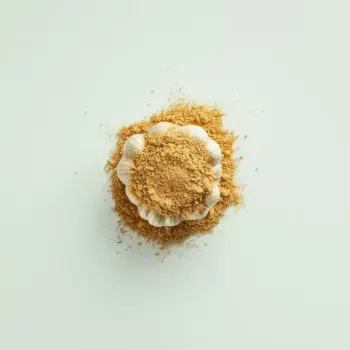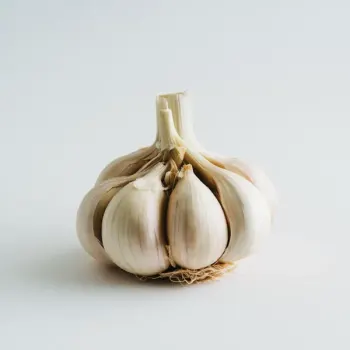Garlic Powder vs Garlic are compared in cooking contexts such as seasoning meats, flavoring soups and stews, enhancing sauces and dressings, and incorporating into baked goods, with considerations for their differing textures, flavors, and uses in dry or wet preparations.

Garlic powder is a ground and dried out version of fresh garlic. It has a much longer shelf life and is more convenient to use in certain cooking situations, offering a milder flavor as compared to its fresh counterpart.

Garlic is a bulbous plant that is widely used as a seasoning or condiment. The flavor is pungent, spicy, and can become mellow and sweet upon cooking. It's a foundational ingredient in many cuisines around the world.
Garlic powder offers a sweet and less assertive flavor, while fresh garlic provides a more complex and robust taste. The texture of garlic powder is fine and dry, which is quite different from the juicy and fibrous texture of fresh garlic. Fresh garlic can infuse into oils and create a depth of flavor, while garlic powder is better for dry rubs and spice mixes.

Your ultimate Recipe Box, Meal Planner, and Cooking Class all in one
Best used in spice rubs for meats like beef or pork. The garlic powder coats the surface evenly and can help form a nice crust. Expect a uniform garlic flavor with less chance of burning. Ideal for creating a marinade that's applied to meats before grilling or baking. Fresh garlic can be minced or grated to release more of its oils and provide a pungent flavor that penetrates the meat.
Suitable for a controlled garlic presence in broths and stews, especially when fresh garlic is not available. It dissolves well in liquids, providing a consistent flavor throughout the dish. Fresh garlic cloves are great for building foundational flavors in soups and stews. They can be sautéed along with onions or other aromatics before liquid is added to release their full flavor profile.
Excellent for dry seasoning mixes and as an ingredient in sauces and dressings where a subtle garlic flavor is desired without the texture of fresh garlic. Fresh garlic is preferred in sauces and dressings where a bold garlic taste is the focus, such as in homemade garlic aioli or marinara sauce. Its texture can also be an asset in chunkier sauces.
Ideal for mixing into doughs and batters for savory baked goods like breads and biscuits, where you want an even distribution of garlic flavor. Fresh garlic can be roasted and added to breads or muffins for a more intense and aromatic flavor. It's perfect for recipes where the garlic is meant to stand out as a distinct element.
Both garlic powder and fresh garlic contain allicin, a compound with potential health benefits, though fresh garlic is richer in allicin due to its raw state.
| Nutrient | Garlic ( per Teaspoon ) | Garlic Powder ( per Teaspoon ) |
|---|---|---|
| Fat | 0g | 0g |
| Sodium | 1mg | 1mg |
| Calcium | 5mg | 5mg |
| Protein | 0.2g | 0.5g |
| Calories | 4 | 10 |
| Carbohydrates | 1g | 2g |
Yes, garlic powder can replace fresh garlic, but it won't provide the same depth or complexity of flavor. The general substitution ratio is 1/8 teaspoon of garlic powder per clove of fresh garlic.
Garlic powder is less potent and has a milder taste than fresh garlic. It's more concentrated, so you use less of it, but the flavor is different due to the processing.
Yes, you can use garlic powder instead of garlic salt by adding an appropriate amount of salt to the garlic powder to match the recipe's flavor profile.
While both contain beneficial compounds, fresh garlic generally has more health benefits, especially due to the presence of allicin, which is more potent in its raw form.
Garlic powder should be stored in a cool, dry place, away from light and moisture. Fresh garlic should be kept in a well-ventilated area at room temperature, away from direct sunlight.